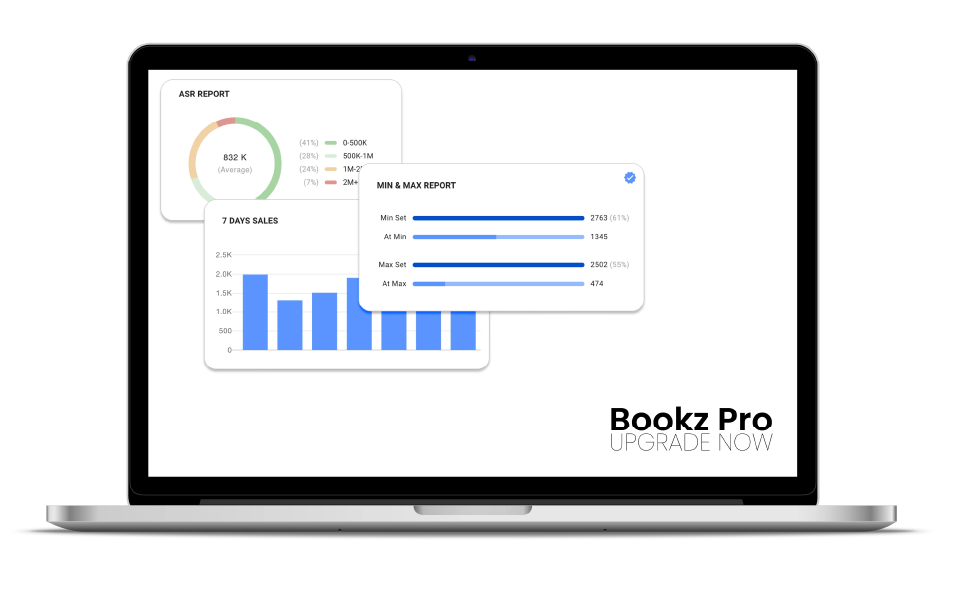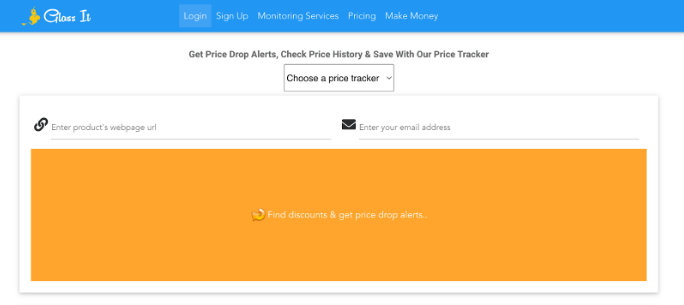What Is Amazon Item Price History: A 2025 Guide

Struggling to set the right price for your products on Amazon? You’re not alone. Many sellers face the same challenge. Pricing on Amazon can be especially tricky due to its fast-paced and highly competitive marketplace. To price effectively, you need to understand why prices change and how that knowledge can shape your strategy.
This blog will provide tools to stay updated on price changes and tips for outsmarting competitors, which can boost your profit. Find out how Amazon items’ price history can work in your favor. Read on for in-depth details.
What is Amazon Item Price History?
Amazon item prices frequently change and sometimes multiple times a day. Sellers can compare their prices with competitors to avoid pricing too high or too low.
As of 2024, Amazon lists around 7,800 products every minute, contributing to a growing number of surplus items and resulting in a vast selection with intense competition among sellers.
Amazon sellers must have a good pricing strategy to compete effectively. You can pick the best price by comparing it to other competitors’ prices. Strategic pricing plans enable sellers to increase revenue and stay competitive.
Why Do Amazon Prices Change?
Amazon prices change frequently. Understanding the reasons behind these changes can help both sellers and buyers make smarter decisions.
The following are the main reasons Amazon’s prices change:
1. Demand and Supply
Supply and demand are fundamental business principle that drives pricing on Amazon. You’ve probably heard of these terms in economics classes. Amazon increases prices when demand spikes, especially when supply is limited. This simple economic principle is at the core of its pricing strategy.
Imagine the cost of textbooks when the semester begins. Why? The same book, the same supply, yet significantly higher profits. This principle works both ways. Demand can increase or decrease, spike or drop. These fluctuations directly impact pricing strategies and can reveal potential profit opportunities.
When a new gadget is launched, and demand is high, the price tends to rise. On the other hand, if there is an oversupply of products in stock and demand is weak, the price will drop.
2. Competitor Pricing
Price competition is common among Amazon sellers, as many adjust their prices in response to competitors, often leading to price shifts across the platform. When one seller reduces their price, others follow suit, leading to broader price shifts across the platform.
3. Amazon Algorithms
Amazon uses dynamic pricing algorithms that automatically adjust prices in real time based on competitor prices and sales trends. Sellers can use repricing tools to automate price adjustments multiple times daily based on live market data.
4. Historical Patterns
You can spot trends by looking at the item’s history. When the price is likely to decrease during the cyclical season, it is best to purchase, as this item can offer significant benefits due to the price difference. Moreover, avoid buying products with substantial price changes.
With this backdrop in mind, one should understand that demand and supply, competitor pricing, and algorithms that adjust prices based on seasonal trends mainly influence Amazon’s prices. Understanding these principles will enable shoppers to make more informed purchasing decisions and save money.
All in One Software
for Book Sellers
Scout Better – List Faster – Reprice Smarter
Over 30% Business Growth
Achieved by Our Clients

What Would Be the Right Price on Amazon?
Amazon sellers should know the correct price for their products or items. While there’s no definitive answer to this question, understanding the key factors can help you optimise your pricing strategy.
Pricing affects how likely customers are to buy, but higher prices can also enhance brand perception. Research similar products to find a balance between competitiveness and profitability. While some products fall within the $30 and $70 range, ideal pricing varies widely depending on the item category and competition.
As prices change, using tools to track price changes can help you identify trends and adjust your price accordingly.
Amazon Item Price History: Benefits of Monitoring
Sellers can benefit from keeping an eye on the Amazon item price history by:
1. Understanding Market Trends
Analyzing seasonal and market trends helps identify optimal pricing strategies. Studying historical price data can help trace selling price patterns. It can also help sellers anticipate price changes and adjust their inventory and pricing accordingly.
2. Master Amazon Pricing
Historical pricing data helps sellers set competitive prices while maximizing profit margins. A seller can use historical data to identify the lowest price their product has reached. This allows inventory to be priced competitively without sacrificing profit margins. It saves the seller from the usual trouble of overpricing and underpricing their products while making their listing all the more attractive in today’s competition.
3. Make Informed Decisions
With Amazon’s tools, sellers can utilize Amazon’s price history for their items to set an intelligent buy-and-sell strategy. For example, if the seller knew that a particular product he carries has a price where its peak sales occur at a specific period of the year, the seller can plan the best times to buy and sell accordingly. This would allow a facility where stock items would enjoy a greater likelihood of demand and distribution, improving the chances of effective inventory management and more profit.
Indeed, Amazon item price tracking has added convenience for sellers. It allows them to monitor price trends to better understand pricing, which is essential for developing better pricing strategies. Furthermore, it facilitates decision-making regarding improving sales performance.
Essential Tools for Tracking Amazon Item Price History
Knowing trends and market preferences is key to making wise decisions. Here are a few tools that can help you track Amazon’s price history.
1. Keepa

Keepa is a powerful tool that visualises price trends over time. It helps Amazon sellers identify the best times to adjust prices, restock inventory, or launch promotions based on past performance. Keepa displays detailed graphs of a book’s price fluctuations over time (new, used, FBA, FBM, and even Amazon’s own price). This allows booksellers to see if a book’s current price is a temporary dip or a long-term trend, helping them buy low and sell high.
2. CamelCamelCamel

CamelCamelCamel provides comprehensive historical price charts for millions of Amazon products. Sellers can observe price changes over various periods, daily, monthly, or yearly. This is particularly relevant for trend analysis and historical data evaluation to find the best pricing strategies.
3. Earny

Earny lets you earn rewards and cashback on your purchases and offers services for online shopping, such as items on your Watchlist. The tool scans your email for purchase receipts and notifies you when prices drop. Earny is free to use but has a monthly subscription fee of only $4.99 to unlock all its features.
4. Honey

Honey offers an excellent opportunity to save a few bucks while shopping online. It is essential for anyone selling and buying products on Amazon. Honey searches for discounts to help save costs and earn more significant profits. You can also set up price drop alerts for items you particularly love.
5. GlassIt

GlassIt keeps track of product prices for you. You can quickly check what a product has cost in the past. Paying is required to get notifications when prices change. Paid plans cost $1.90 per month and allow for the tracking of prices on 500 products. The free version may occasionally malfunction and not show the price history correctly.
Smarter Listing and Pricing Starts with Bookz Pro!

Amazon Book Reselling Blueprint
Read now, explore our full guide. Your revolution starts here. Subscribe to get the blueprint!
Listing your products on Amazon is the first step to success, but getting the price right is the main component to staying ahead. Amazon’s dynamic marketplace means prices fluctuate constantly. A wise repricer can be your secret weapon. Bookz Pro’s innovative repricing technology uses historical price trends, competitor listings, and market demand data to adjust your prices in real-time automatically. Bookz Pro’s repricing technology ensures your listings remain competitive without sacrificing profitability.
Check out our free Amazon Book Reselling Blueprint to guide you step by step in starting your book-selling business. It will help you understand the book-selling industry, strategies, and insights to maximise your business.
Conclusion
Understanding Amazon’s price history is key to developing more innovative pricing strategies and staying competitive. Price changes can depend on various aspects, such as demand, seasons, and prices of competitor products. Keep track of these price changes through your tools since they also reveal some trends in competitive pricing. Smart repricers can also help by automatically adjusting prices for maximum profit based on trends and competition. By tracking price history and using the right tools, you can make informed pricing decisions and grow your Amazon business more effectively.
Frequently Asked Questions
Amazon’s prices can change multiple times a day. These fluctuations are typically influenced by demand, supply, competitor pricing, and Amazon’s dynamic pricing algorithms.
Popular tools like Keepa, CamelCamelCamel, and Bookz Pro allow you to view historical pricing data. They provide price charts, alerts, and insights that help sellers understand long-term product trends.
By analyzing price history, you can identify the best times to buy or list products. Setting price drop alerts and studying pricing patterns helps you optimize your pricing strategy and improve profit margins.
No, prices can vary between customers. Factors like seller competition, product demand, and regional settings can affect pricing. Conducting research and testing different price points can help you find the most profitable pricing strategy for each product.
Amazon uses a combination of demand and supply trends, competitor pricing, and proprietary algorithms to set or suggest product prices. These factors can change frequently, resulting in real-time pricing updates.



